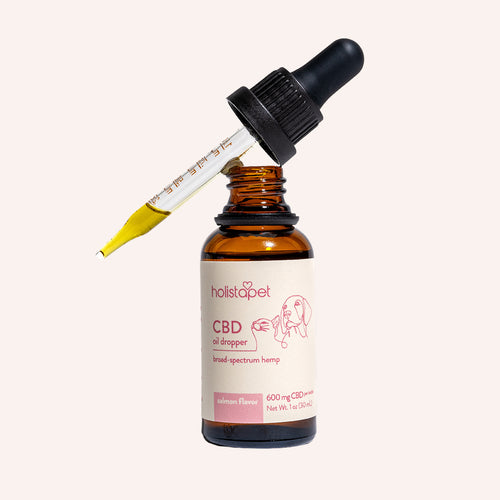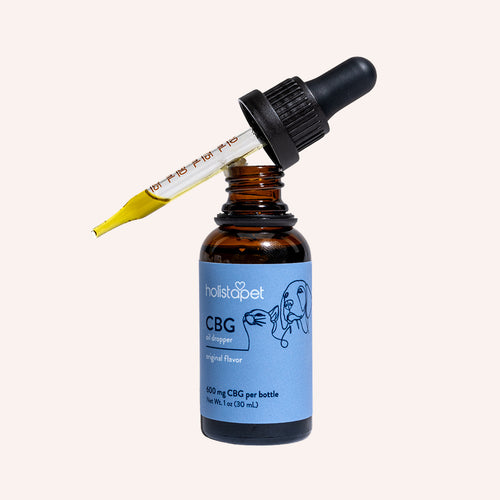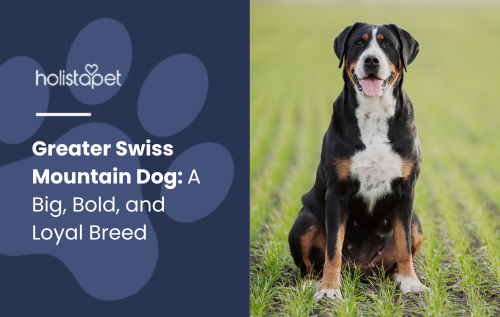There's no denying that the Labrador Retriever is one of the most popular dog breeds of all time. They have a history as working dogs since their coats and tail are designed specifically for diving into freezing water to catch fish and ducks. This breed is a friendly, loyal, and loving dog that is a perfect fit for every home. Labs get along with just about everyone, so find out if the Lab is right for you!
Labrador Retriever Characteristics (Physical)
The Lab is athletic and strong, perfect for its ancient function as a retrieving gun dog. To better hunt waterfowl under difficult conditions, the Labrador Retriever has developed a dense, weather-resistant coat and powerful jaws. However, it's their friendly eyes that often stand out the most. Labs also have a signature smile that can brighten up anyone's day.

Labrador Retriever Size
Labradors are considered medium in size. They typically grow to about 22 to 24 inches tall at the shoulder. Male Labs can weigh up to 65-80 pounds, while females can reach 55-70 pounds. They have a moderately wide chest, allowing for unrestricted forelimb movement and excellent stamina. They have muscular forequarters, which helps with their coordination and balance. Their hind legs are strong, which helps them move and run effortlessly.
The tail is one of the Lab's most distinguishing features. Their tail is thick at the base and tapers towards the tip. It should be medium in length, balanced with the rest of the breed's body. This breed also has a broad skull with a wedge-shaped head. The American Kennel Club describes the breed's dark brown eyes as "friendly." The Lab's well-developed head and kind face sit upon a muscular neck that allows the dog to retrieve efficiently.
Labrador Retriever Personality
The Labrador Retriever has become one of the most popular dog breeds in the world, thanks to their laid-back, friendly personalities. The breed can be calm and respectful at home and very lively when they have others to play with. Properly trained Labs are obedient and enjoy learning, making them great companions for almost every family and household.
Labrador Retrievers love people and enjoy being around other dogs. Labs are a social breed that will always want to be around others whenever possible. They'll want to come with you on errands and cuddle while you're watching television. This dog can be quite the couch potato when it comes to hanging out with the family.

Labrador Retriever Exercise
Labs need at least 1-2 hours of exercise a day to stay healthy and happy. You should take them on daily walks around the neighborhood, but if you have more time, bring them along on a hiking or backpacking trail to see them truly excel. Labrador Retrievers also love exploring. They might impulsively jump into the nearest body of water or sniff around the nature trail.
Organized events are also great ways to keep your Labrador motivated with strong work ethic. Training them for competitions is a great way to bond and keep them stimulated. Labs excel in athletic tournaments like agility and frisbee competitions, but many also compete in obedience events.
Labrador Retriever Training
The Labrador Retriever is eager to learn and please, making them quite easy to train. It's recommended that you sign up for basic obedience courses as soon as possible to get your puppy socialized early on. To give your dog daily purpose and stimulation, try teaching them various tricks. Once your puppy has the basic commands down like "sit" and "stay," you can teach them a few useful and fun tasks. Some of these include:
- Retrieving food and drinks from the fridge
- Flushing the toilet
- Playing hide and seek

Labrador Retriever History
The Labrador Retriever was originally called the "traditional waterdog" of Newfoundland. Their skills in retrieving caught the eye of English nobles in the early 1800s, who brought the breed back to England. British breeders—many of whom would later become involved in the early Labrador Retriever Club—continued to refine the breed in the latter half of the 19th century. These breeders focused on developing a short, dense, weather-resistant coat so the Labs could swim even in cold, icy waters.
Eventually, Labs were even able to retrieve fish in the freezing waters of the North Atlantic Ocean. The Labs also gained an "otter tail," which acts as a powerful rudder when they're swimming. Another main focus of the standardization of the Lab has always been its personality. They were bred to be kind, outgoing, and gentle—traits that continue to make them ideal family dogs and excellent choices for human companionship.
One dog judge even stated that if the dog does not possess the true breed standard temperament, he is not a Labrador. What may shock dog lovers is that the Labrador breed almost became extinct in the 1880s. Thanks to the efforts of many English families and support from the national breed club community, they are often credited with saving the breed.
Despite the dog's usefulness in Newfoundland, restrictions and tax laws saw the breed dwindle in everyday households. Families were not allowed to keep more than one dog without facing high taxes. The United Kennel Club (UKC) in England recognized the breed in 1903. Shortly after, The American Kennel Club (AKC) registered the Lab in 1917. In 1991, Labrador Retrievers officially became the most popular dog breed in America. Since then, it has remained the top breed and one of America's favorites!
Labrador Retriever Health Problems
The healthy Labrador lifespan lasts 10 to 12 years on average, which is a typical life expectancy for large breed dogs. It's very important to schedule regular vet visits as Labrador owners to stay on top of their health and monitor your dog’s age-related needs. Always purchase your Lab from a trusted, registered breeder.
Reputable breeders—often affiliated with a Labrador Retriever Club or national breed club—will provide health guarantees for their puppies. They also perform essential health tests, screening for issues like elbow dysplasia, progressive retinal atrophy, and exercise induced collapse, and remove dogs carrying those traits from the breeding pool.
- Canine Hip Dysplasia: Canine hip dysplasia is a condition that affects the mobility in your dog's hip joint. Basically, your dog's hip joint is a ball and socket joint. If the ball becomes misaligned, it can deform and degrade the socket, leading to a loss of cartilage. Eventually, scar tissue will form around the joint, creating bone spurs and joint pains.
- Osteochondritis Dissecans (OCD): OCD is a condition that occurs when there is an abnormal development of the cartilage on the end of a bone in the joint. It's an inflammatory condition, causing the cartilage to eventually separate from the underlying bone. OCD most commonly occurs in the shoulders.
- Patellar Luxation: The patella, or knee cap, usually rides within your femur's groove in the knee. Patellar luxation is a condition when the knee cap becomes dislocated from the knee, which can cause some discomfort. This condition is one of the most common orthopedic conditions in dogs, found in 7% of puppies.
- Obesity: Obesity is the most common preventable disease in dogs living in North America, affecting about 30% of pups. It's even more common in older dogs. Obesity can lead to many health complications and risks for your dog so always make sure they are active and maintaining a proper diet.

How to Care for a Labrador Retriever
Labrador Retrievers are friendly, likable dogs, but they have a few quirks that should be kept in mind when caring for this dog breed. Because of their strong urge to retrieve, Labs are known to start chewing when left bored and unstimulated. Labs also have a natural curiosity and love to roam and explore. If your dog plays in the backyard, ensure it is properly secured with a fence.
Labs are also known to dig, so always keep a close eye on your dog when they are outside. When walking your Labrador Retriever, it's important to have them on a secure collar and leash. You might even want to consider a harness, especially for young Labrador Retriever puppies still learning to walk on a lead. Labs are pretty strong and athletic dogs, and they might be able to pull away if you're not careful—particularly if they spot other dogs or distractions.
Nutrition and Feeding for Labrador Retrievers
Labrador Retrievers are prone to obesity and are always up for a few extra snacks. Depending on your Lab's weight and activity level, you should feed them around 2-4 cups of high-quality food a day. Talk to your vet to find out exactly the amount of food your dog should get daily according to their weight, activity level, health, and age.
It's best to feed your Lab twice a day, splitting the approved daily amount into two different meals. Multiple meals will help regulate your Labrador Retriever puppy or adult dog's appetite and keep them from begging for more food at certain times of the day. A quality dog food will support their working abilities and overall health, providing a balanced mix of meat, vegetables, grains, and even fruit.
Always look for high-quality ingredients, such as a trustworthy meat source (like chicken, not chicken meal), and organic, natural items—especially important for large breed dogs like Labs.

Coat Color And Grooming
The Labrador Retriever's double-coat is one of its most distinguishing characteristics. It's short, thick, and dense—sometimes even feeling a bit hard to the hand. On the other hand, the undercoat is softer and more weather-resistant, protecting them from the cold and water. This deep-chested dog breed comes in three main colors: yellow, chocolate, and black retriever. According to the American Kennel Club and the Labrador Retriever Club Inc, they shouldn't have any spotting or other color fur mixed into their coat.
Because of their thick, dense coat, you should brush your Lab regularly. Brushing at least once a week will reduce shedding and remove dead hair. You can also give them occasional baths (about once every month or two) to keep them clean, especially if they've been outside exploring or playing in the water. Check your dog’s ears for wax and dirt buildup to prevent ear infections. Remember to use vet-approved ear cleaner when you swab and clean your Lab’s ears.
You should also trim your dog's nails to make sure your Lab can't hurt itself. Although daily activity should wear down their nails, if you can hear the nails clicking on the floor, it means it's time to trim them. Also, brush your dog's teeth daily or a few times a week to keep them from getting dental issues, like gum disease and cavities. You can also give them a fresh dental stick for dogs to help maintain their oral health.
Children And Other Pets
When properly socialized as a puppy, the Labrador Retriever is great with people of all ages and most pets. Labs are very gentle and docile, making them great around children. You might want to supervise Labs with younger children at first since they can sometimes get "mouthy." While they are not known to bite, this might scare younger kids who don't understand that the Lab is just trying to play.
Labrador Retrievers are also great with other dogs and pets, even cats. Once introduced properly, Labs will be very friendly and make excellent family dogs. They're often seen as the ideal dog for households that already have other animals. Labs will even be friendly towards dogs they don't know. You can bring them to dog parks to get them properly socialized. This will also give these athletic dogs a chance to romp around with other large breed dogs, getting out excess energy.

Rescue Groups
Labrador Retrievers are one of the most popular dogs in North America. Unfortunately, this means there is a higher chance that you'll come across a Lab needing a home. If you're looking for a Labrador Retriever rescue group in your state, try looking on The American Lab Rescue. This group specializes in rescuing Labs across the country and is run completely by volunteers. They have rehomed over 5100 dogs to date!
Breed Organizations
Breed organizations are created to support breeders and Labrador dog owners within a certain area, usually a country. These groups, often referred to as a Labrador Retriever club or national breed club, provide resources and information on the breed to spread awareness and promote responsible ownership. A breed club may also maintain a calendar of events specific to that breed, such as dog shows, contests, and other activities.
The Labrador Retriever Club was founded in 1931 in New York. They publish a quarterly newsletter and an annual Yearbook. The LRC also provides educational material for new owners, breeders, and potential judges of the breed. The Club also has a list of events and programs for Labs, including agility contests, field trials, and retriever hunting tests.
Final Thoughts
Labs are considered one of the most versatile and smart dogs in the world. Thanks to their determination, athleticism, and eagerness to please, this intelligent breed has been used for drug and explosive detection, search and rescue, therapy, and guide dog work. You'll also see Labs representing their national breed club in dog shows, or visiting children's hospitals as family companion animals.
There's a myth floating around that each color Lab has a distinct personality or various traits. For example, some believe the yellow Lab is the most likely to be lazy, while the black Labrador is usually the best hunter, but this is all untrue and unsupported by science. Your Lab's personality has nothing to do with their color. In fact, all three colors — including chocolate and fox red — can be born in one litter!


 CBD Oil for Dogs - Fast Acting
CBD Oil for Dogs - Fast Acting
 Chicken Flavored CBD Oil For Dogs - Easy Dose
Chicken Flavored CBD Oil For Dogs - Easy Dose
 Salmon Flavored CBD Oil For Dogs - Highly Rated
Salmon Flavored CBD Oil For Dogs - Highly Rated
 CBG Oil for Dogs and Cats - Loved by Thousands
CBG Oil for Dogs and Cats - Loved by Thousands





Leave a comment
All comments are moderated before being published.
This site is protected by hCaptcha and the hCaptcha Privacy Policy and Terms of Service apply.